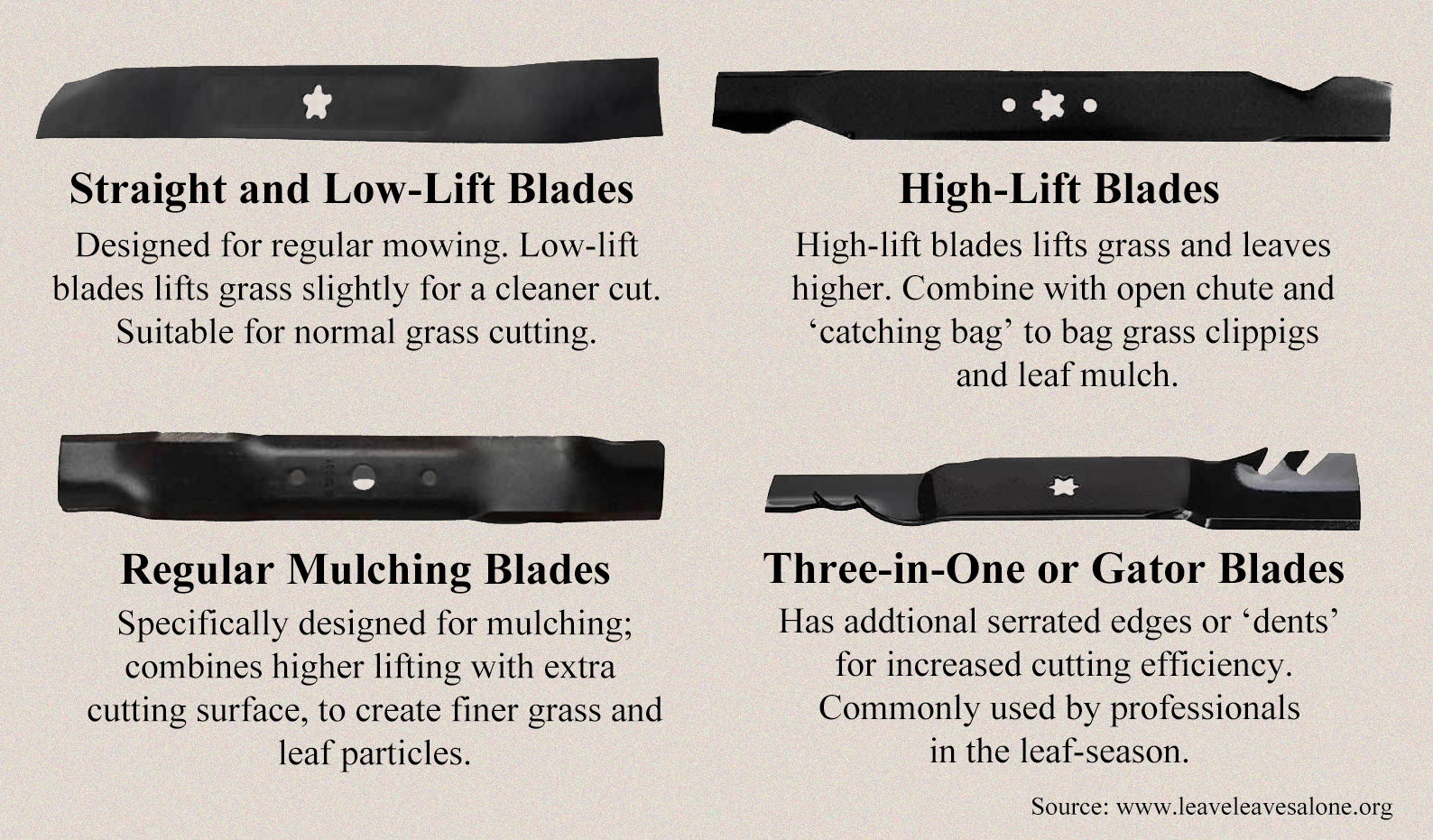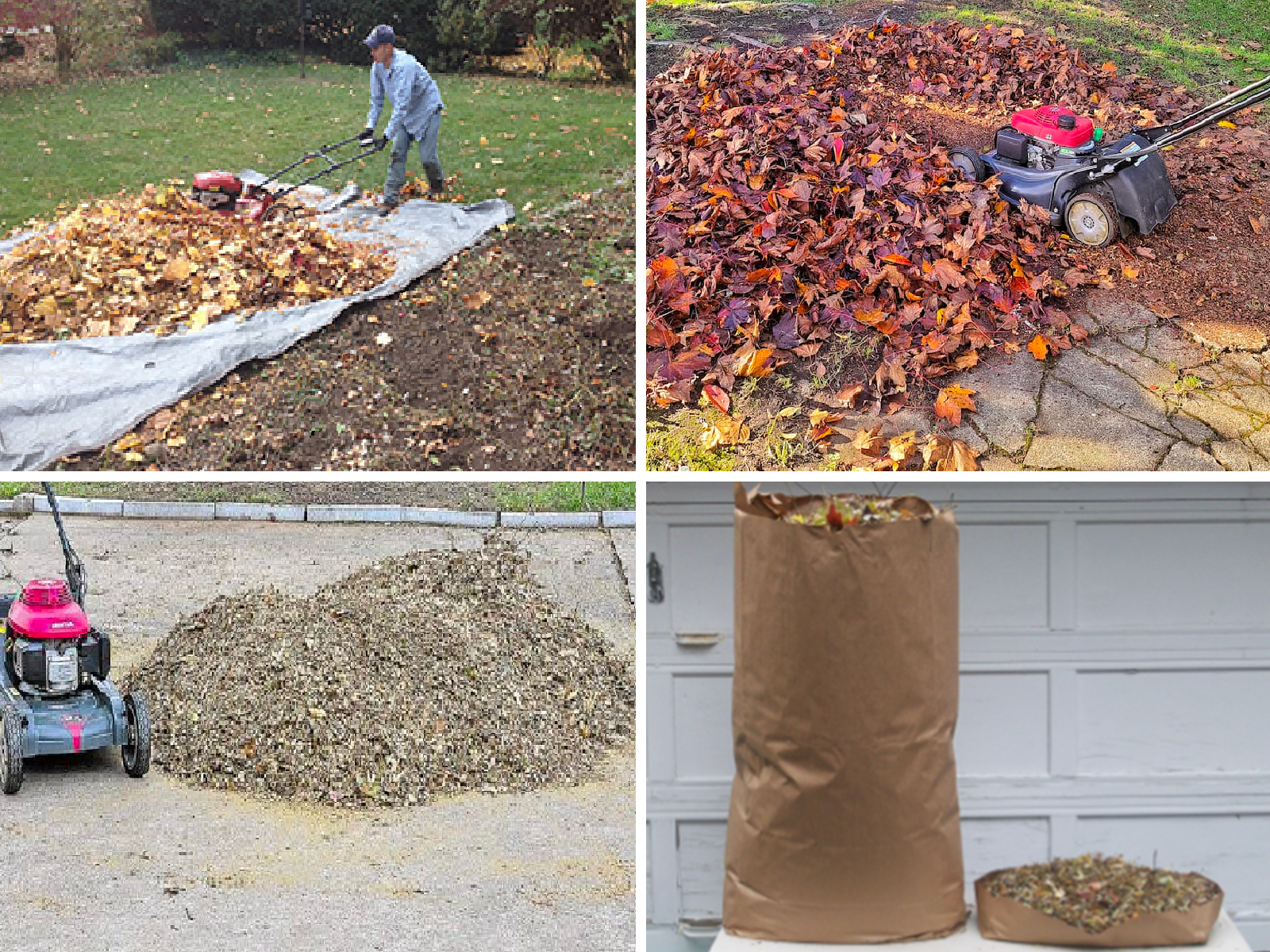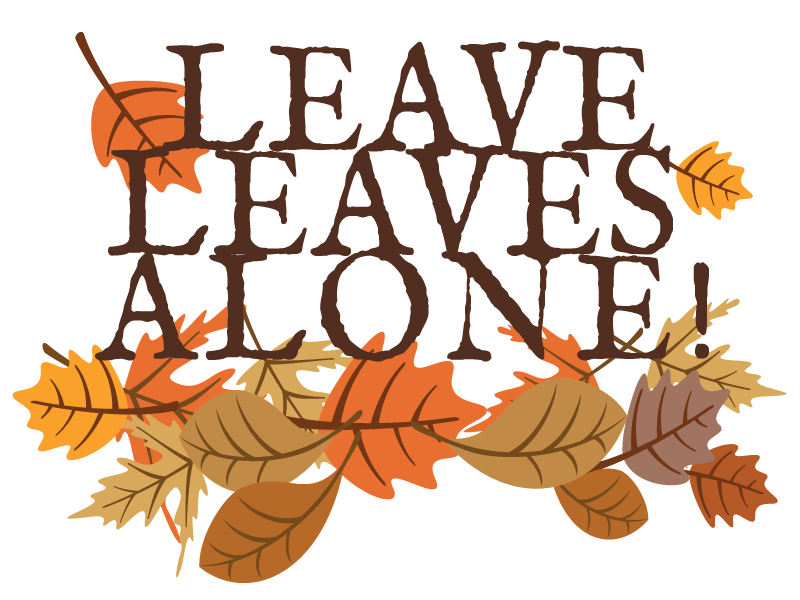Mulching for Professionals
Concerns about climate change and the loss of biodiversity have made it necessary for us to reconsider the way we live and work. But, if landscaping is your business, you don’t need to worry. The demand for landscaping work will remain strong while healthier practices and better cleaner equipment is readily available. And, with professional grade equipment, landscapers are in a great position to save time and money by switching to leaf mulching.
Clearing Leaves from the Lawn
Removing the leaves from lawns is not an efficient way of managing fall leaves. But when your client requires “a clean look” for their yard there are a number of ways you can clear the lawn of leaves and other debris. Make sure you use the gathered organic debris to your benefit, by using it as mulch under trees or in planting beds, or by creating compost. Never trash those valuable leaves! Leaves are not litter!
 Rakes
Rakes
For small areas rakes can do the work. Rakes can clean leaves as fast as a blower, without the associated emissions and pollutants. For a video of rake versus a leaf blower click here >
 Blowers
Blowers
If you insist on blowing the leaves off the lawn, consider the use of a battery operated blower. There are many options on the market. Batteries can be loaded overnight, or, if the homeowner agrees on you using their outlet, during the shift.
 Vacuum Tools
Vacuum Tools
Vacuum equipment like a Cyclone Rake acts like an inverted blower. It sucks up the leaves and collects them in a vacuum bag. The bag offers a convenient way of transporting the leaves elsewhere.
 Leaf Sweepers
Leaf Sweepers
A lawn sweeper is a piece of lawn care equipment that is pushed or pulled across a lawn to pick up leaves, twigs, grass clippings and other yard debris. The collected materials can be dumped on a compost site or truck for removal.
 Leaf Plow
Leaf Plow
A leaf plow is a device or attachment designed for efficiently clearing and collecting fallen leaves, typically used with lawn tractors or other similar equipment
Mulching Blades
As landscapers, with professional grade equipment you are in a great position to save time and money by switching to leaf mulching or mulch-mowing. Mulching leaves involves using mulching blades on your mower and closing the mower deck’s exit chute so that the leaves stay in the deck for an extra rotation so they get chopped into smaller pieces.
There are several types of mulching blades.

Regular Mowing Blades
Leaves can be mulch-mowed with a regular blade, but you might need more time, making repeat passes, to get the best results. Special mulching blades are more efficient. Regular mowing blades (which have a small lift) are absolutely fine for small yards and suit most home gardeners very well. Professionals should consider specialty blades.
High-Lift Mulching Blades
These lift the grass blades and leaves higher in the mower deck so that they are chopped several times before falling to the ground, ensuring smaller pieces, which will fall easily between the grass blades.
Specialty Blades
Gator blades, which have teeth, are well worth it for landscapers managing heavy leaf fall and oak leaves. The teeth on these blades will shred deep leaf piles.
Keeping it Sharp
For a clean cut and healthy grass, it is advised to sharpen blades regularly. The extra teeth on the mulching blades do not cut the grass, so sharpening them isn’t as important. Just sharpen the cutting part of the blade as you would any standard mower blade, and make sure the teeth are clean, to prevent clogging. For a tutorial on sharpening mower blades click here >
Blade Blockers, Chute Blockers and Other Add-on Mulching Equipment
Mulch plates, covers and plugs can be connected to the mower to block grass clippings and chopped leaves from escaping from the mower deck. They can be purchased from mower dealers to fit your specific mower deck.
Dealing with Heavy Leaf-Litter
With the right equipment, you can simply mow leaves into lawns. Deep piles of leaves can be also be mulched, avoiding the necessity of bagging or hauling leaves off site. To see how a properly equipped machine easily mulches deep piles of leaves watch this video.

For Municipalities and Park Managers
Practicing mulch-mowing can offer logistic challenges for the maintenance of very large or fragmented properties. Often the blowers outnumber the mowing tools and the transportation of the mowing equipment can be challening. That doesn’t mean it is impossible. A growing number of towns and park managers have switched to mulch-mowing and to electric equipment. Both New York City Park and Recreation and the New York City Housing Authority practice leaf mulching.

There are a number of financial incentives to encourage the shift to electric equipment; The Inflation Reduction Act Features offers tax credit for Commercial Grade Electric Lawn Mowers. And some states provide credit to municipalities that have purchased electric landscaping equipment for example: NYSSERDA. Municipalities might also consider bulk buy can reduce costs, especially when the sales are expanded to residents.
Answers to Your (or Your Clients’) Questions
My clients think mowing the leaves into the lawn will make the lawn look messy. Most homeowners don’t realize the landscaper is doing anything different after they switch to mulching. The mulch generally cannot be seen on the lawn. Sometimes, if the leaf layer is very thick, you may need to make two passes to mulch all the leaves. Landscaping mowers equipped with mulching fittings reduce the leaves to such tiny fragments that you don’t see them at all.
I don’t like the look of leaf mulch on perennial beds. Some people prefer the look of commercial mulches. In that case, use a leaf mulch about 3″ deep and top it off with a cosmetic layer of commercial mulch. This way you are still using the leaves productively.
What do you do when there isn’t much lawn but you still have loads of leaves to clear? Rake or blow the leaves into long strips on the driveway, (the strips can be about 2 ft high) and mow over them with your mower. The pile will reduce in volume about 10-fold and you can blow the mulch back onto the flower beds or around shrubs. Watch a pro doing this.
Won’t the leaf mulch run off when it rains? In general the leaf mulch stays right where you left it, especially when it rains. It begins to break down immediately and improves the structure of the soil.
I don’t want to buy new equipment. You can mulch with regular mower blades – it’s just much more efficient with the mulching blades. They are relatively inexpensive and you will easily get your money’s worth back in the first season (if not the first day) because of the time you save.
Doesn’t this take more time than removing the leaves? Absolutely not – because you are hardly moving the leaves from where they fell. Just mowing them straight into the ground. PLUS, when you pile leaves in the road for town pick-up, half the time they blow right back into the yard, and you find yourself blowing the same leaves all over again the following week.
I might want to compost some leaves but clients think compost smells. Refer them to some literature (see our Useful Links at the left of the Who We Are page), and see if you can persuade them to try it for one year. They’ll quickly realize the advantage of composting and that it doesn’t smell or attract critters.
Talk to your clients: More and more homeowners are interested in adopting sustainable, earth friendly landscaping practices. Speak to your clients and tell them the many benefits of mulch-mowing.
What Landscapers Who Mulch Say
Tom Megna, Town of Bedford Parks Foreman
The Town of Bedford Parks has been mulching the leaves on their public properties now for the past 10 years. The fine leaf dust has shown to be extremely beneficial to our soil, which seems to account for a quick green up of our turf in the spring. The process of leaf mulching has made us more efficient in our fall leaf litter clean up and lets us spread out man power among our several areas in which we maintain.
Five Brothers Landscaping
“I’ve been mulching leaves for at least 20 years and the soil you create by doing this is unlike any other. Leaf mulch is more nutritional and safer for your property. Most commercial mulch is the by-product of dead trees – who knows what they died of? Leaf mulch comes directly from your property and does not contain any foreign elements.” David Duarte, Five Brothers Landscaping
Ryan, Ryan & Ryan Landscaping.
“I started mulching leaves in 2010 and saved $400 a week in overtime, plus more than $1,000 a week in tipping fees. Mulching leaves on site is so much faster and more efficient. And it’s good for the soil.” Sean Ryan, Ryan & Ryan Landscaping.
Vulpone Landscaping & Lawn Maintenance.
“I have been mulching leaves for several years. What inspired me was the impact to the environment, the time savings and money savings that results from this method,” Anthony Vulpone, Vulpone Landscaping & Lawn Maintenance.
Aesthetic Landscape Care Inc.
“We try to never remove leaves from clients’ properties. I mulch 100% of the leaves on my properties, although 70% is acceptable, if you have tough conditions like steep slopes or rocks. The new equipment for landscapers really has made this possible. You can perform the same autumn cleaning in the same or less time as the regular weekly grass cutting time and that’s it. You never touch those leaves again. Plus it leaves the leaves where they should be – providing nutrition to the soil,” Aesthetic Landscape Care Inc., Tim Downey.
Sav DeGiorgio, Park Preserves – Town of Greenburgh
“Leaf mulching on-site is something I have been practicing and perfecting at home. I have noticed a healthier lawn this year and have not needed to water at all this year. I would not say that my weeds have disappeared, but the healthier grass has been better able to compete with the weeds. I also noticed a reduced impact from grub damage. Only a small patch was affected. I hope to see more of this pattern in the future.”
Leave Leaves Alone is located in Bedford Hills, NY email: leaveleavesalone@gmail.com



